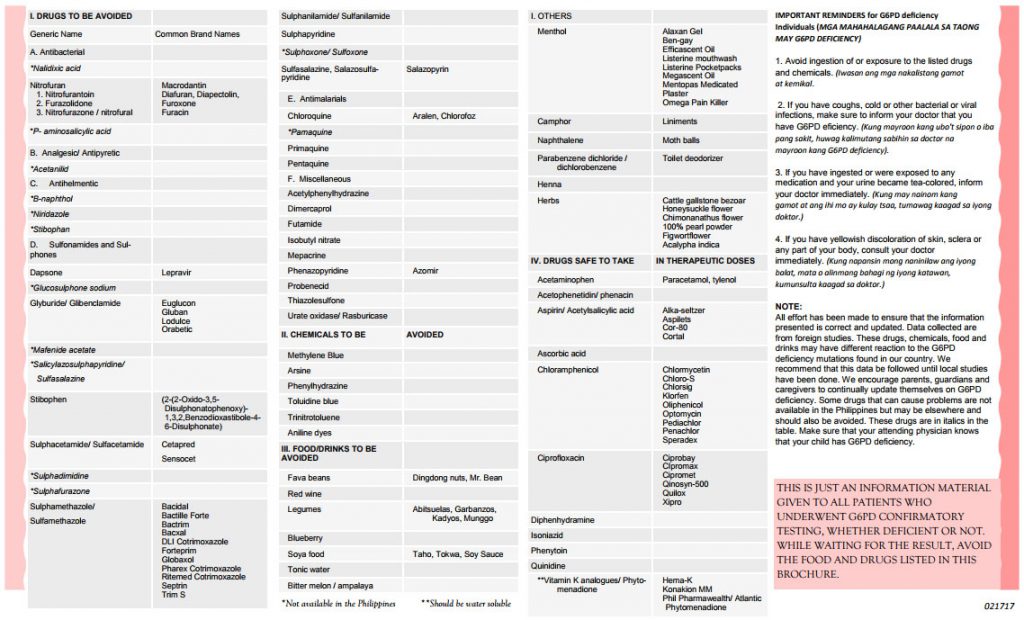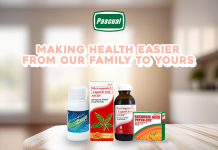By Rose Gonzaga-Tacang
After ten years of spending time together (aka dating), my husband and I tied the knot in a simple ceremony with family and friends. Surprisingly, five (5) weeks after our wedding, we found out we were expecting – yes, honeymoon baby on the way!
It was an unexpected but very much welcome event since we did not think that we will be blessed with a little one that early in our married life. Fast-forward to 2011, we gave birth to our unico hijo.
Scary News
A few days after we returned home, we received a call from the hospital that our son’s Newborn Screening (NBS) results tested positive for Glucose-6-Phosphate Dehydrogenase or G6PD deficiency. As a first-time mom who doesn’t know much about G6PD, paranoia began to set in and I felt that I was about to burst into tears at any moment. So many questions were going through my head – what did I do wrong during the pregnancy that led to this? Did I eat or drink anything? Did I miss taking my vitamins? What about my son, will he live a normal life? Would this mean a life-long treatment for him?
However, the rational part of me told myself to be strong, keep my composure and save the tears for later. I listened to the other person on the line while she explained that we need to undergo a confirmatory test and the list of hospitals that we can go to. Even if my emotions were all over the place, I resolved to keep my objectivity intact.
I then called my husband, and through sobs and sniffles, told him about the NBS results. In hindsight, I thought that maybe I was overreacting that time, but I felt it was the release I needed so I can clear my head and focus on what we needed to know and what we must do so we can avoid the effects of being G6PD-deficient.
After a few days, when I was physically strong enough to leave the house, we took the confirmatory test and the results we received were the same – that our son indeed has a G6PD deficiency. We were given a kit that explains what G6PD deficiency is and what types of food, medicines, and household items can trigger its more harmful effects.
What is G6PD Deficiency?
G6PD deficiency or Favism is the most common enzyme deficiency worldwide. The enzyme G6PD is especially important to red blood cells, which carry oxygen to all parts of the body. If a baby does not have enough G6PD, his red blood cells lack protection from the harmful effects of oxidative substances. A baby with G6PD deficiency appears and remains healthy until he is exposed to a large number of oxidative substances. When this happens, his red blood cells are destroyed, a process known as hemolysis. When they undergo hemolysis, the baby will have hemolytic anemia. The signs and symptoms of hemolytic anemia are paleness, dizziness, headache, tea-colored urine, and abdominal or back pain or both. Hemolytic anemia, when very severe, can end in death. Destroyed red blood cells are brought to the liver to be broken down into smaller pieces for disposal. One of the end products of this process is bilirubin, a yellowish substance that accumulates in different parts of the body when too much of it is produced. Quite often, bilirubin accumulates in the skin and causes it to appear yellowish. In the worst cases, bilirubin accumulates in the brain and causes mental retardation or death.
According to statistics, about 400 million people have G6PD deficiency, and it is most common in Africa, Southeast Asia, and the Middle East.
As of December 2016, the prevalence of babies who tested positive for G6PD deficiency in the Philippines is 1 out 56.
Swinging It Out
Our pediatrician explained that G6PD deficiency, while common amongst Filipinos, is the least serious among the disorders included in the NBS and that there is no medication necessary after detection. However, since we stopped breastfeeding early, we made sure to consult our pediatrician and always check the list of substances and medicines to avoid any potential danger to our son’s health. Substances which contain strong oxidative properties are listed below:
We stuck to the food guide until my son’s toddler years, since we did not want to put his health at risk. I admit that we did not feel good about it because it was as if we were keeping him from living a normal life and eating the same food as we did. Eventually, I have learned that some of my friends and colleagues have kids who are also coping with the same condition. Some shared that they allow their children to eat food such as adobo, taho, and ginisang monggo – and as you can see, these contain substances that must be avoided by people with G6PD deficiency.
With the experiences shared by my friends and the advice of our pediatrician, we slowly went away with the food restrictions and introduced one type of food at a time to our son. We made sure to look out for any reactions, such as paleness, extreme tiredness, rapid heartbeat or breathing, shortness of breath, jaundice/yellowing of the skin and eyes, an enlarged spleen and dark/tea-colored urine. Fortunately, our son had none of the reactions and that made us a little more confident that we can continue letting him eat some of the food/substances on the list.
Our son is now six years old and he likes to eat a lot. Whenever we cook adobo, he usually asks for a second serving of rice! We still use the list of substances as reference, but instead of restricting him from such food types, we eat in moderation.
I know that there is still a lot to learn about G6PD deficiency and I consider every day as an opportunity to know more about how our family can cope with this condition. While I understand that treatment or vaccine for G6PD deficiency is not yet available, the good news is that people who have it can still normally function in their environment.
Here are some things I’ve learned from this experience:
1. Read and understand before you react. Most of us moms and moms-to-be would agree that our children’s health comes first. We would do practically anything we can to make sure that we are able to keep our children healthy and this starts from the moment we plan on conceiving. But sometimes, no matter how much we try to keep ourselves healthy for our baby, “nature” or genes get in the way.
When I first learned about our son’s condition, my initial reaction was of panic and I partly blamed myself for not preparing well enough during the pre- and pregnancy stages. But I knew that it would not help the situation if I did not get rid of the negative feelings. Upon learning through research that G6PD deficiency is a genetic condition, I began to accept that there is nothing my body can do to prevent it from being passed on to my child. Talking to our pediatrician and finding out that most people who have G6PD deficiency are able to live normally also helped in gradually making me feel relieved that it is a highly manageable condition.
2. Prevention (with a dash of instinct) is better than cure. There are a lot of substances that have high oxidative properties, and unfortunately, most of these substances can be found in our homes. While I have exposed my son to substances such as menthol, liniments, toilet deodorizers and food items such as soy sauce, ampalaya, monggo and even DingDong, I don’t encourage parents who have children with G6PD deficiency to do the same. Even so, there are substances on the list that I strictly would keep away from my son i.e. mothballs and henna.
I would like to emphasize that not all children who have G6PD deficiency will have the same reaction to the same substance. So parents going through the same situation, please keep in mind that even if my son is able to consume those food items that I mentioned above, it doesn’t mean that it will be the same for others who have G6PD deficiency. Still, practice caution and always consult your pediatrician first.
3. Do not be ashamed if you or your child has G6PD deficiency. Rather, treat it as a chance to let others understand this condition. The more people who know about this, the lesser the risk of exposing those who have it to potential danger.
The journey for us coping with G6PD deficiency may be far from over but until treatment for it is yet to be discovered, we should stay informed and keep ourselves updated. More importantly, let us not allow this condition keep us from living normally.
As the cliche goes, life is full of surprises. Some are welcomed, some are scary. But those scary ones, they test our strength and our resolve in swinging it out at whatever life throws at us.
Sources:
https://www.newbornscreening.ph/images/stories/downloadables/G6PD-brochure_2017.pdf
http://g6pddeficiency.org/wp/g6pd-deficiency-home/g6pd-deficiency-inheritance-chart/#.Wlj0GqiWaUl
http://www.doh.gov.ph/newborn-screening
Rose Gonzaga-Tacang is a loving mom and wife to two of the most rowdy and hot-headed but most precious males in her life – her son, Luke and her husband, Chris. She has been in the HR profession for more than 10 years and is fondly called as Mommy T by her colleagues. She loves to read and watch movies and is a closet-gamer.






